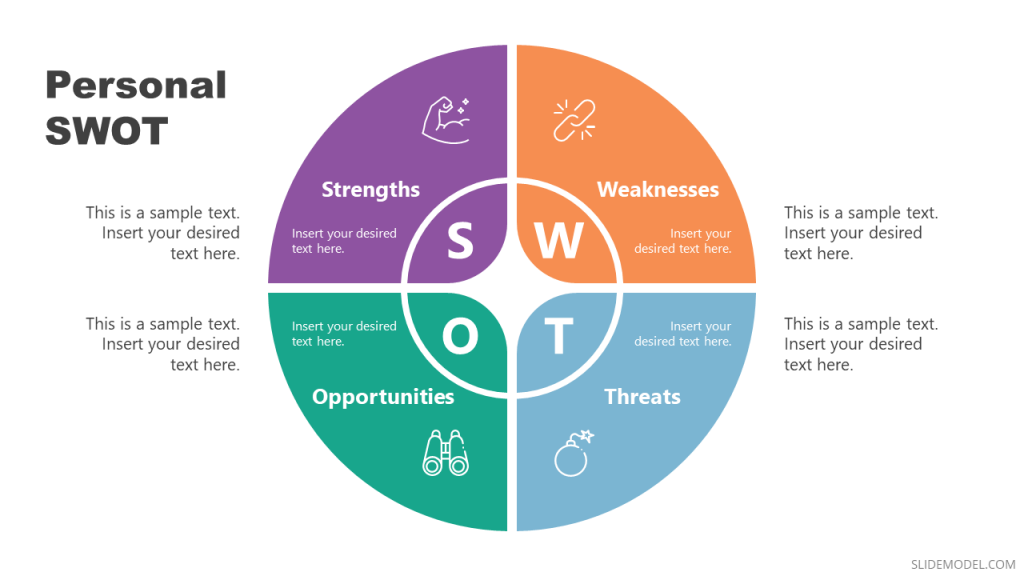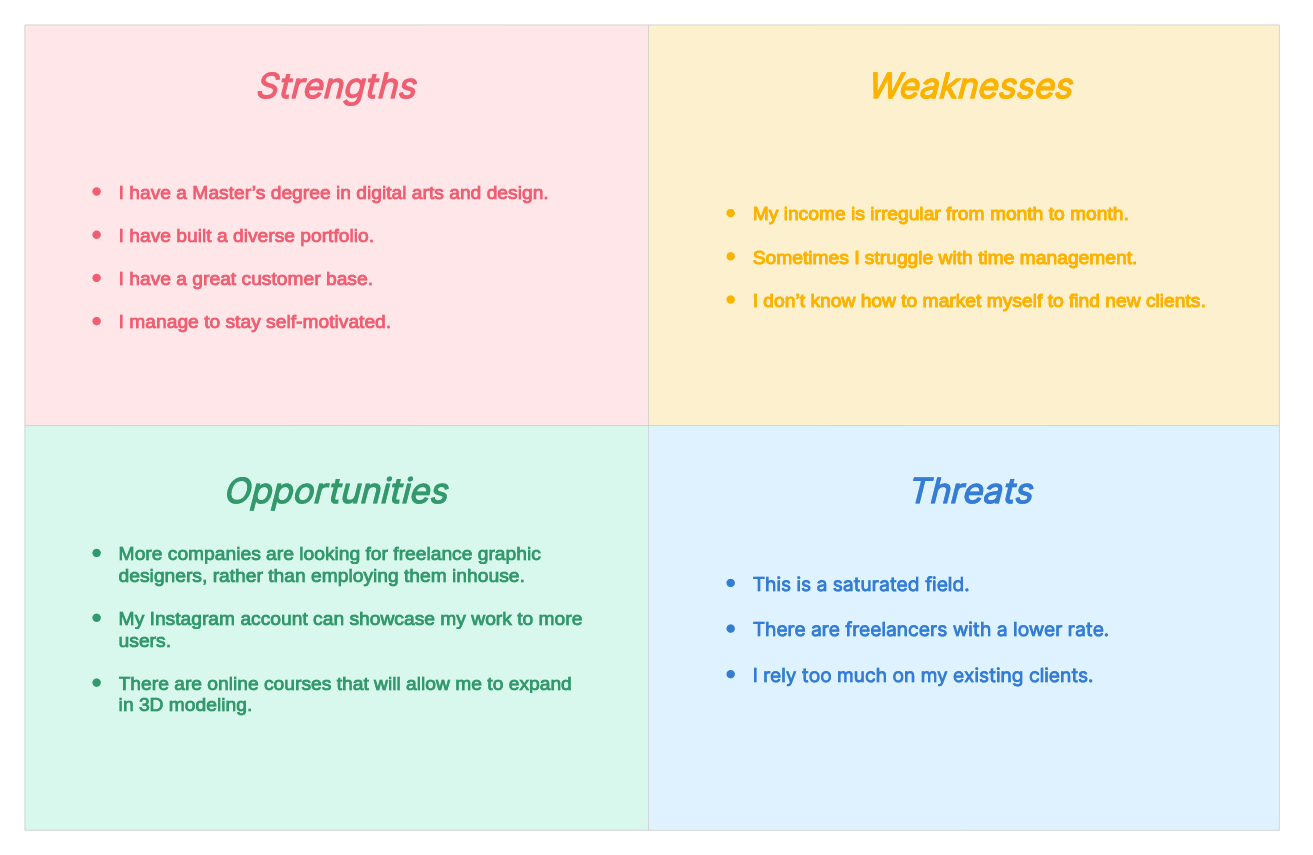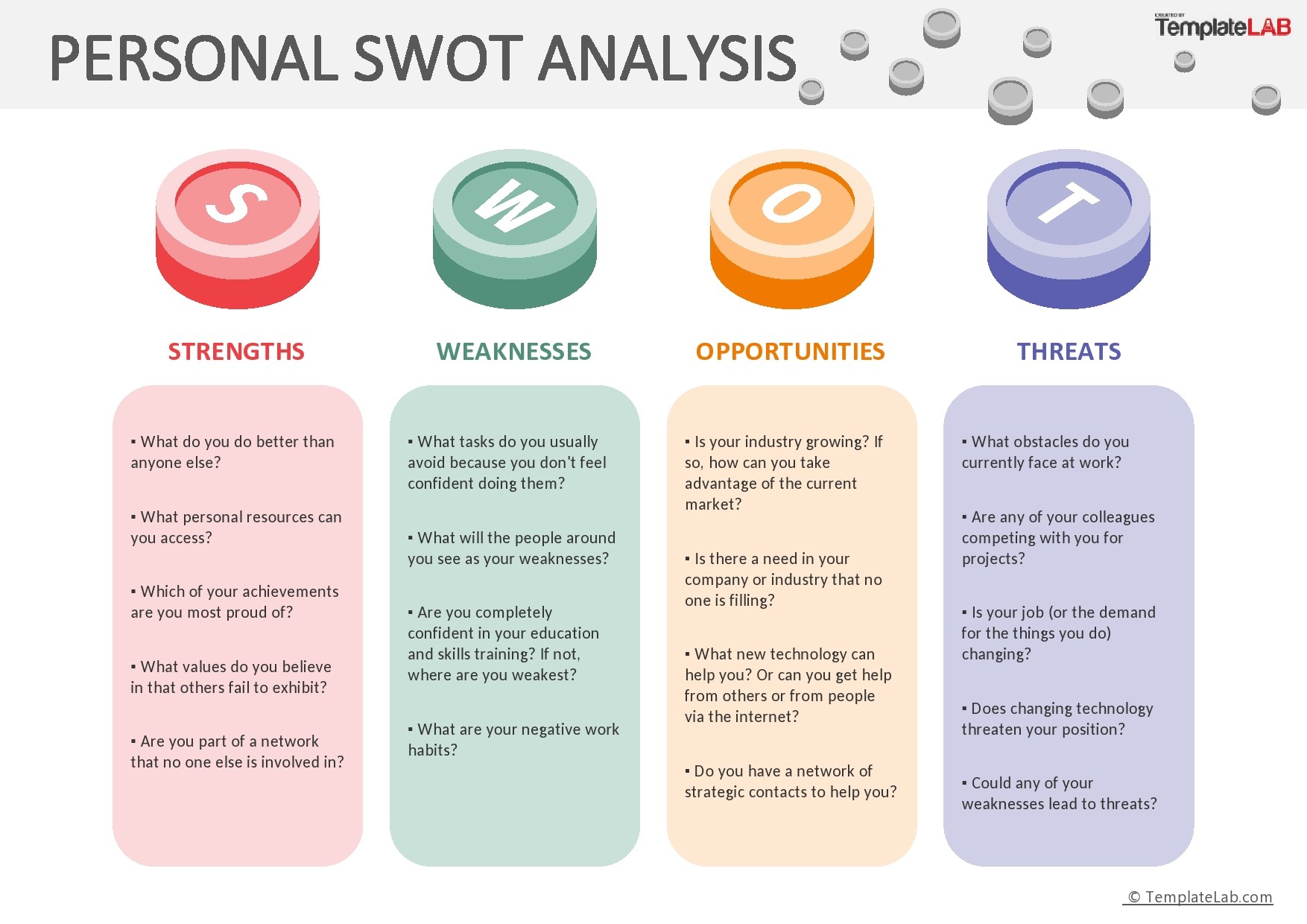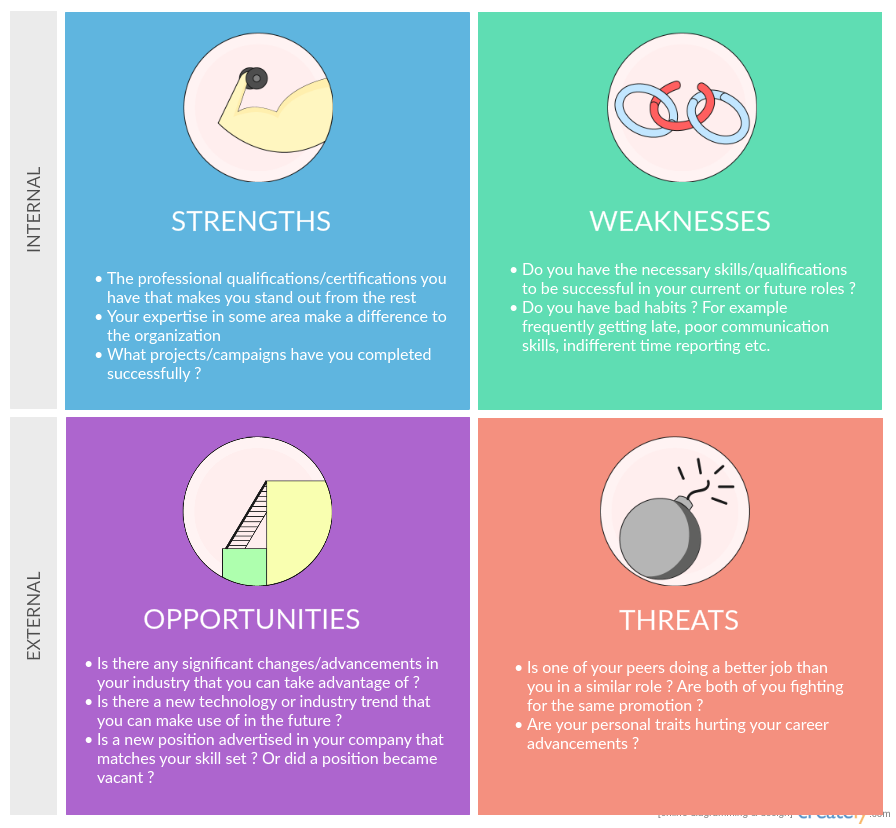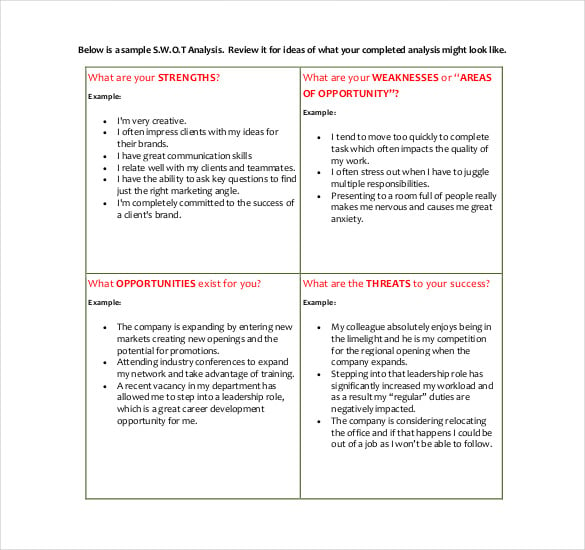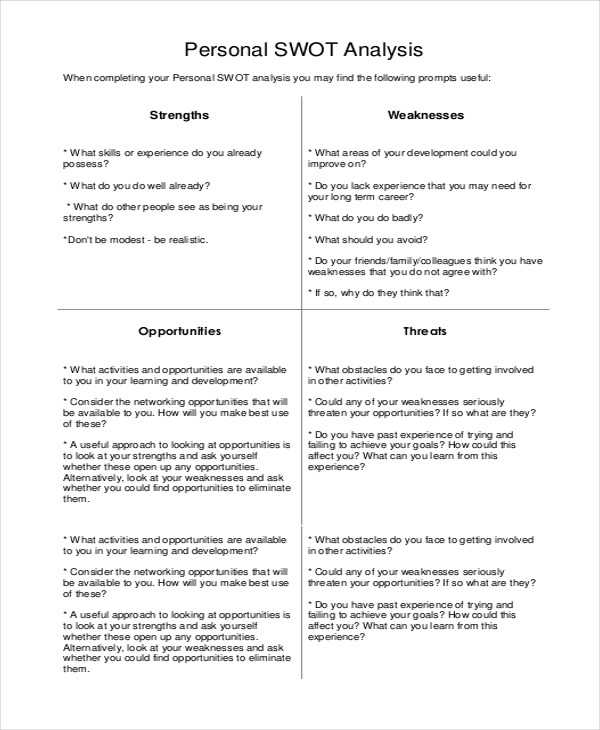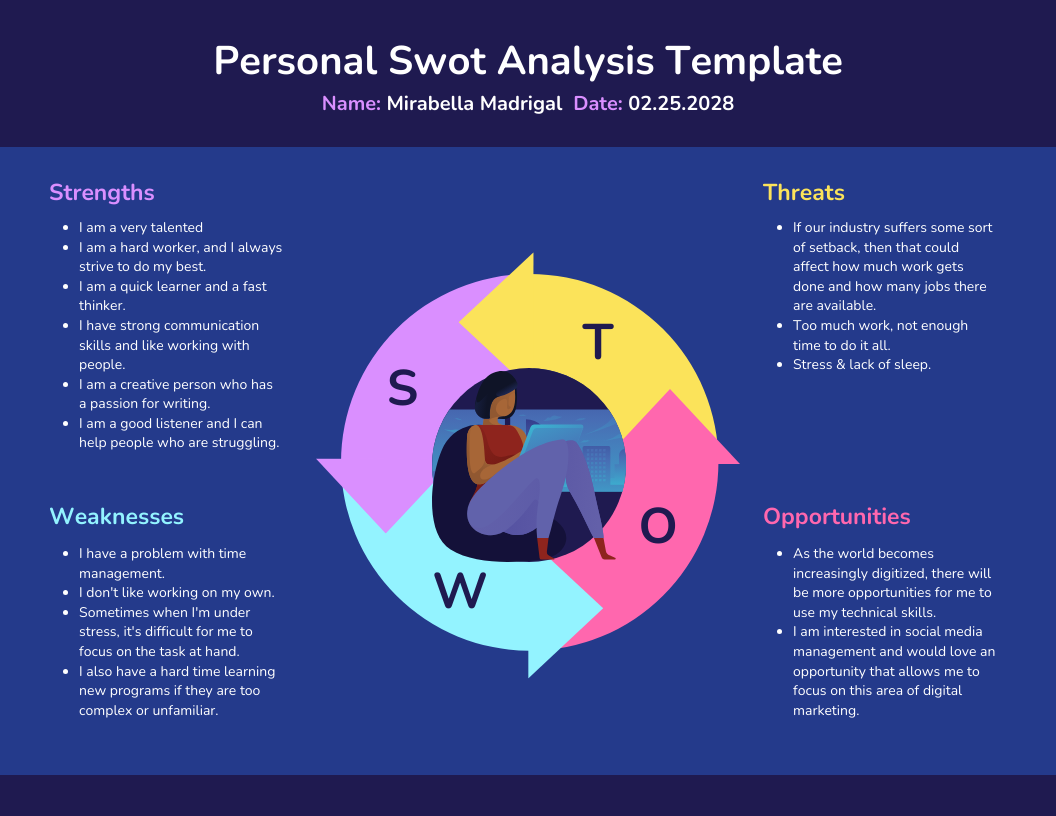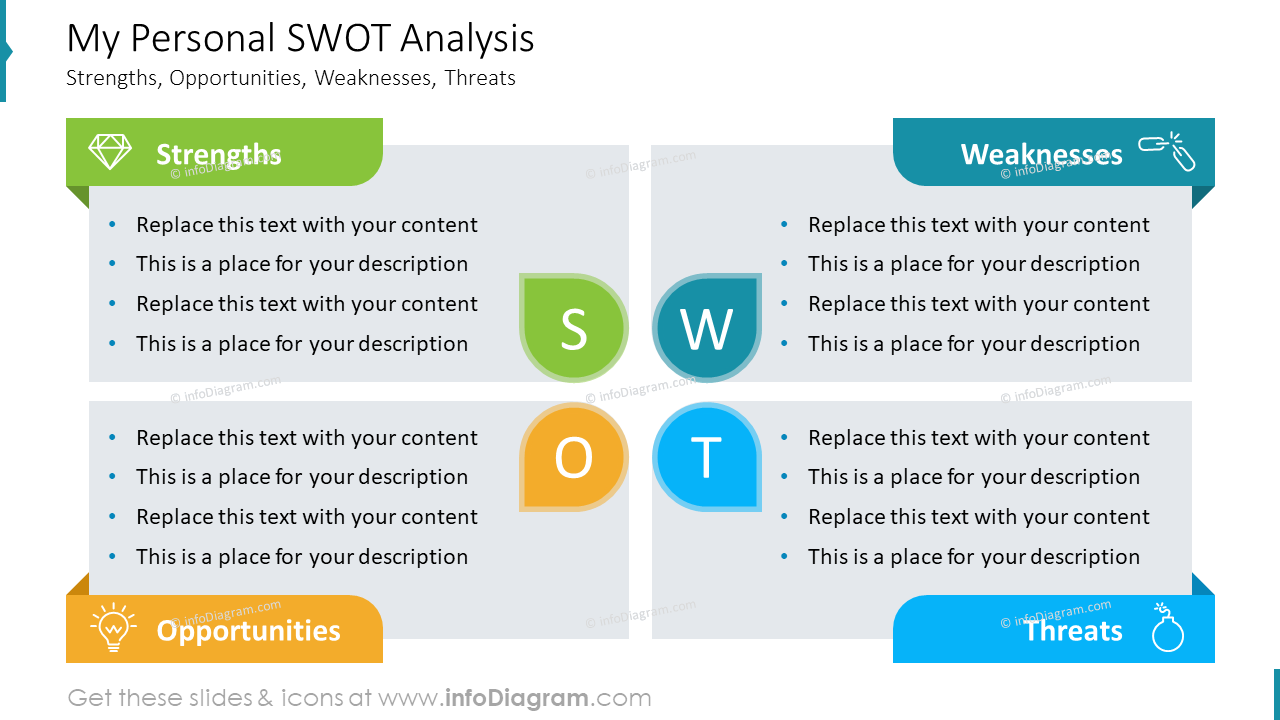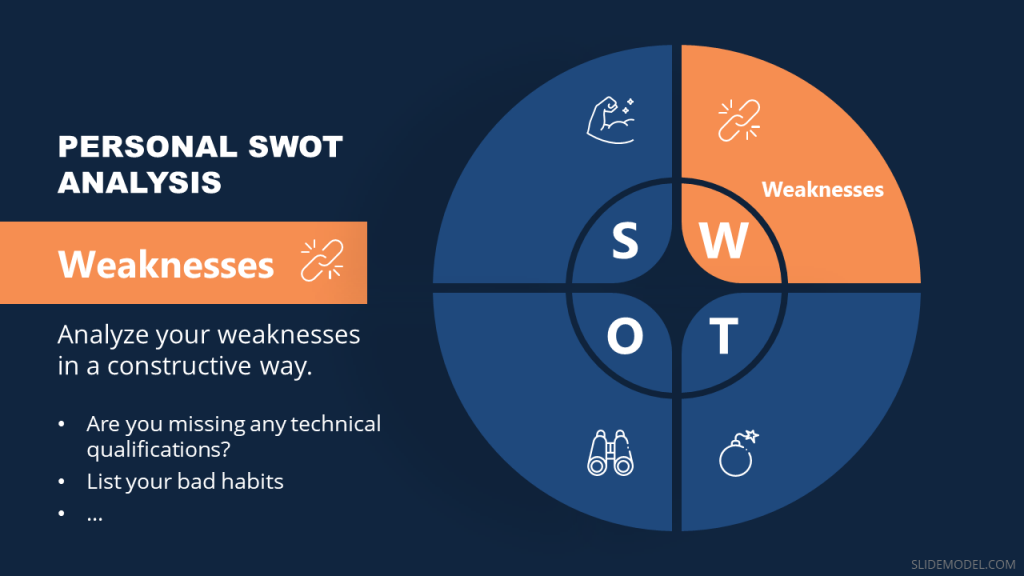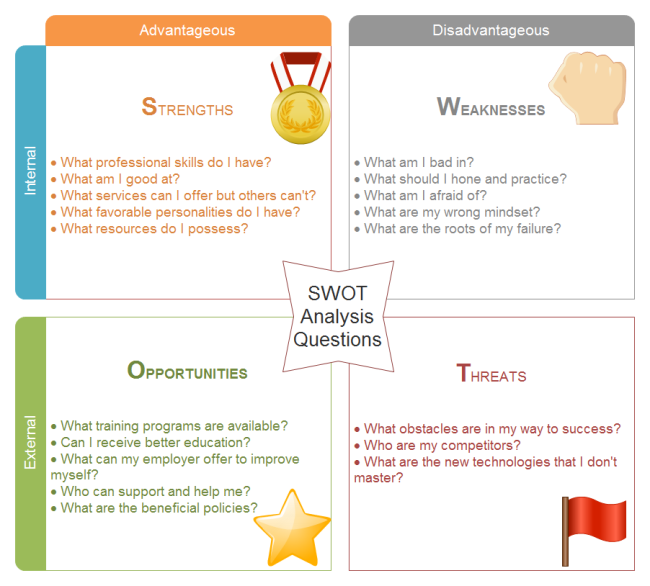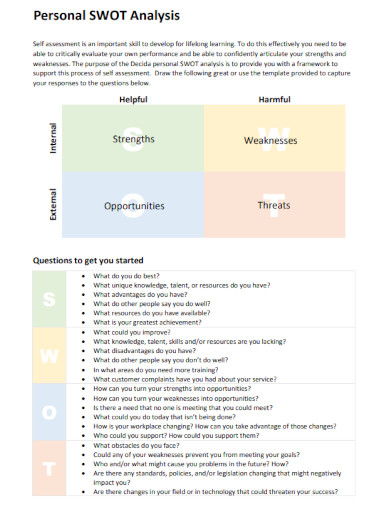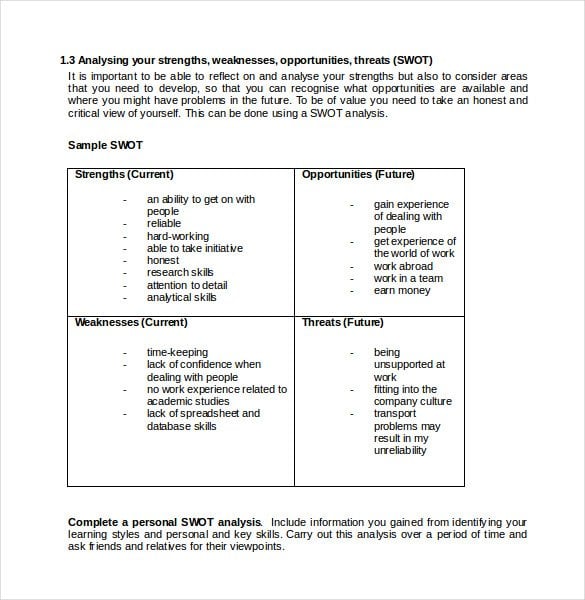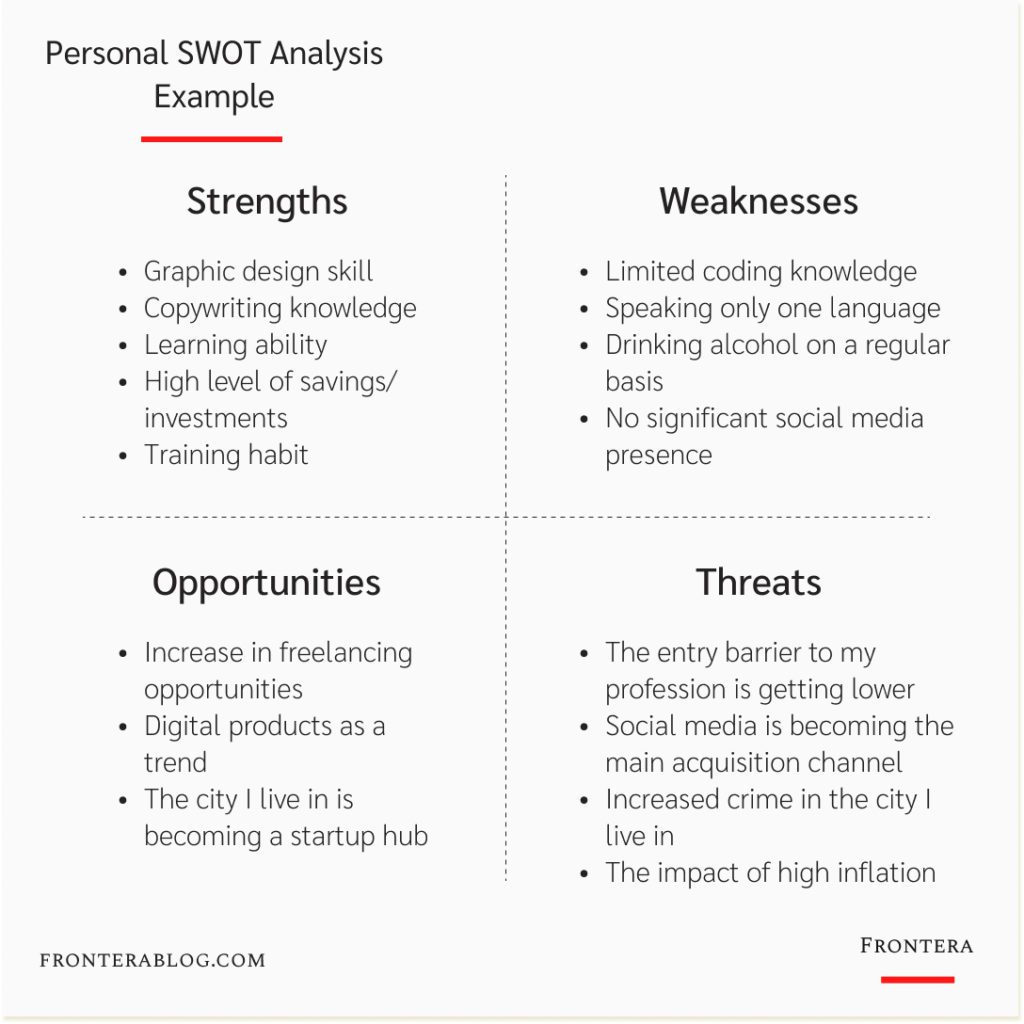Self Personal Swot Analysis Sample
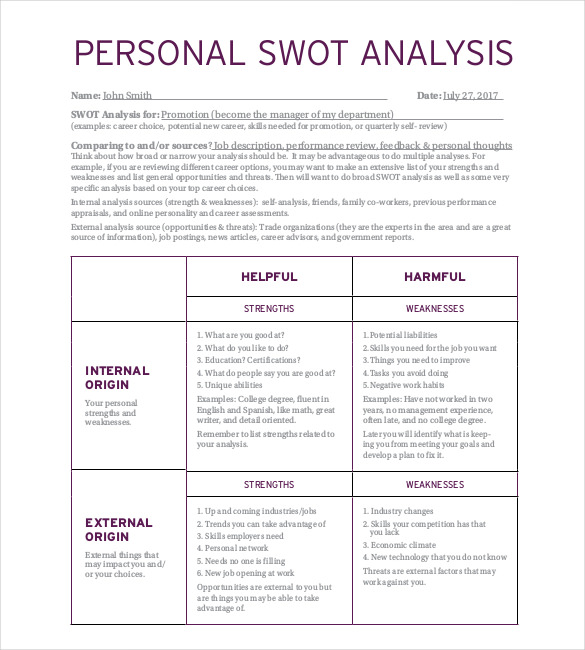
In today's relentlessly competitive landscape, professionals are increasingly seeking tools to gain a sharper edge. One time-tested method, often associated with corporate strategy, is now being embraced for individual career development: the SWOT analysis.
While traditionally used to evaluate a company's Strengths, Weaknesses, Opportunities, and Threats, applying the same framework to oneself can yield profound insights into personal and professional trajectories.
The self-SWOT analysis promises a structured approach to self-awareness, enabling individuals to identify areas for improvement and capitalize on potential avenues for growth.
The Anatomy of a Self-SWOT
The self-SWOT analysis is deceptively simple, yet its power lies in the honesty and rigor applied to each quadrant. It pushes individuals to confront their perceived limitations and recognize their untapped potential.
Here's a breakdown of each element:
Strengths: What do you do well?
This section focuses on your core competencies and advantages. Strengths are internal attributes that give you a competitive edge, such as technical skills, strong communication abilities, or a proven track record of success.
Document specific examples of times you've excelled or received positive feedback.
Weaknesses: Where can you improve?
This is often the most challenging, yet crucial, part of the analysis. Weaknesses are internal factors that hinder your performance or hold you back from reaching your goals.
Be honest about areas where you struggle, lack experience, or need to develop new skills. This might include areas like public speaking, data analysis, or project management.
Opportunities: What possibilities are on the horizon?
Opportunities are external factors that you can leverage to your advantage. This includes trends in your industry, new technologies, or changes in the job market that align with your skills and aspirations.
Networking events, online courses, and emerging industries can all present significant opportunities. Consider what you can do to take advantage of these external factors.
Threats: What challenges are you facing?
Threats are external factors that could negatively impact your progress. This might include competition from other professionals, economic downturns, or changes in your industry that could render your skills obsolete.
Identifying potential threats allows you to proactively develop strategies to mitigate their impact. This might involve upskilling, seeking mentorship, or exploring alternative career paths.
Real-World Applications and Expert Opinions
Career coaches and HR professionals increasingly advocate for the use of self-SWOT analyses. "It's about understanding your personal brand and how it aligns with your career goals," says Dr. Anya Sharma, a leading career strategist.
"The key is to be brutally honest with yourself. The more accurate your assessment, the more effective your action plan will be," Dr. Sharma emphasizes.
Many online resources and templates are available to guide individuals through the process. However, some experts caution against relying solely on self-assessment.
"Seeking feedback from trusted colleagues, mentors, or even former managers can provide valuable perspectives and identify blind spots," suggests David Chen, a senior HR consultant.
"The self-SWOT analysis is not a one-time event, but rather an ongoing process of self-reflection and adaptation."
The Chartered Institute of Personnel and Development (CIPD) highlights the importance of continuous professional development and encourages individuals to regularly assess their skills and career aspirations.
Beyond the Grid: Actionable Insights
The real value of a self-SWOT analysis lies in the actions it inspires. It’s not enough to simply identify your strengths and weaknesses; you must develop a plan to leverage your advantages and address your shortcomings.
For example, if a self-SWOT reveals a weakness in data analysis, the individual might enroll in a relevant online course or seek mentorship from a colleague with expertise in that area. Similarly, if an opportunity arises to present at a conference, the individual might prepare a compelling presentation leveraging their communication strengths.
Regularly reviewing and updating your self-SWOT allows you to adapt to changing circumstances and stay ahead of the curve. This iterative process ensures that you remain proactive in managing your career trajectory.
The Future of Self-Assessment
As technology continues to reshape the workplace, the self-SWOT analysis is likely to evolve. Artificial intelligence and data analytics could play a role in providing more personalized and data-driven insights.
Platforms might emerge that offer automated self-assessments, tailored learning recommendations, and even predictive analytics to forecast career opportunities and threats.
Ultimately, the self-SWOT analysis is a powerful tool for self-discovery and career empowerment. By embracing this framework, individuals can take control of their professional development and chart a course towards long-term success.
